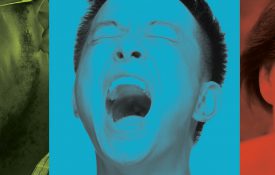-

A Closer Look at the Face in Your Toast
Brain research shows why people may be biased to see faces, even when only the slightest hint of facial features exists.
-

Nonverbal Accents
Psychological research is revealing that facial expressions and other forms of nonverbal communications may have culturally specific identifiers, contrary to long-held beliefs about cultural commonalities in emotion cues.
-
R. Nathan Spreng
Cornell University http://lbc.human.cornell.edu/ What does your research focus on? My research examines large-scale brain network dynamics and their role in cognition. I am actively involved in the development and implementation of multivariate and network-based statistical
-
Phantom Limbs More Common Than Previously Thought
After the loss of a limb, most patients experience the feeling of a phantom limb — the vivid illusion that the amputated arm or leg is still present. Damage to the nervous system, such as
-
Study Indicates How We Maintain Visual Details In Short Term Memory
Working memory (also known as short term memory) is our ability to keep a small amount of information active in our mind. This is useful for information we need to know on-the-fly, such as a
-
Hypnosis-induced Synaesthesia Makes You See Red – in the Number Seven
Hypnosis can induce synaesthetic experiences – where one sense triggers the involuntary use of another – according to a new study in Psychological Science. The findings suggests that people with synaesthesia do not necessarily have

